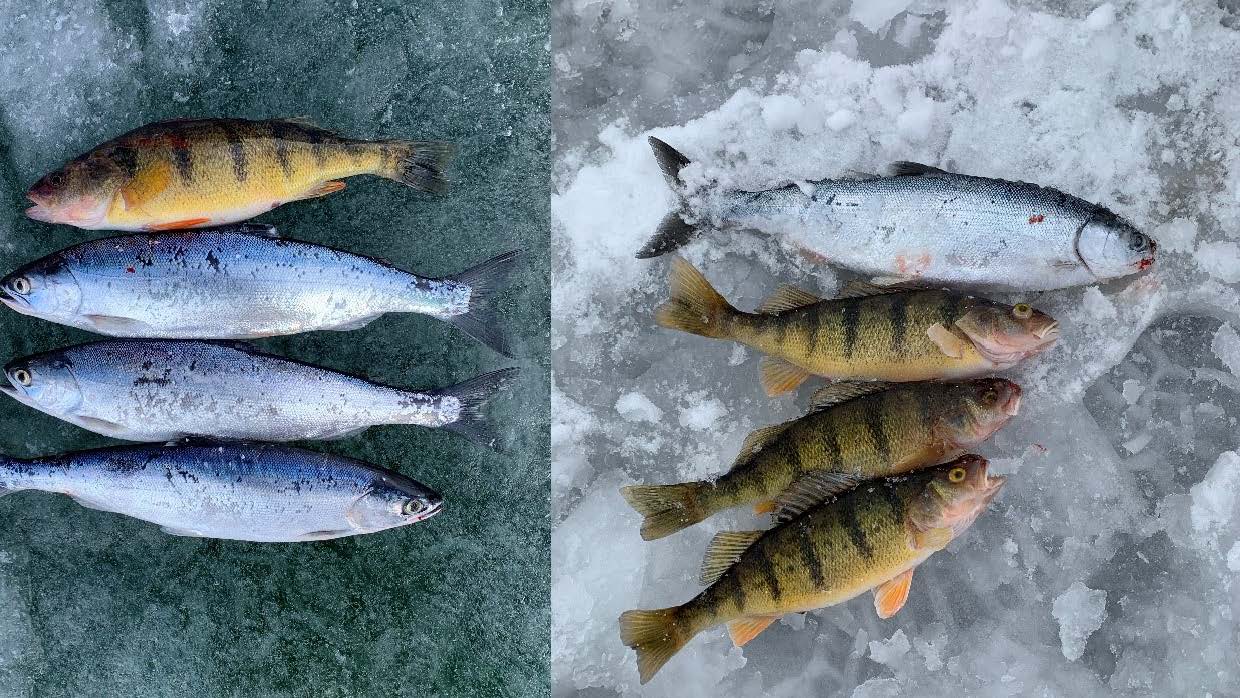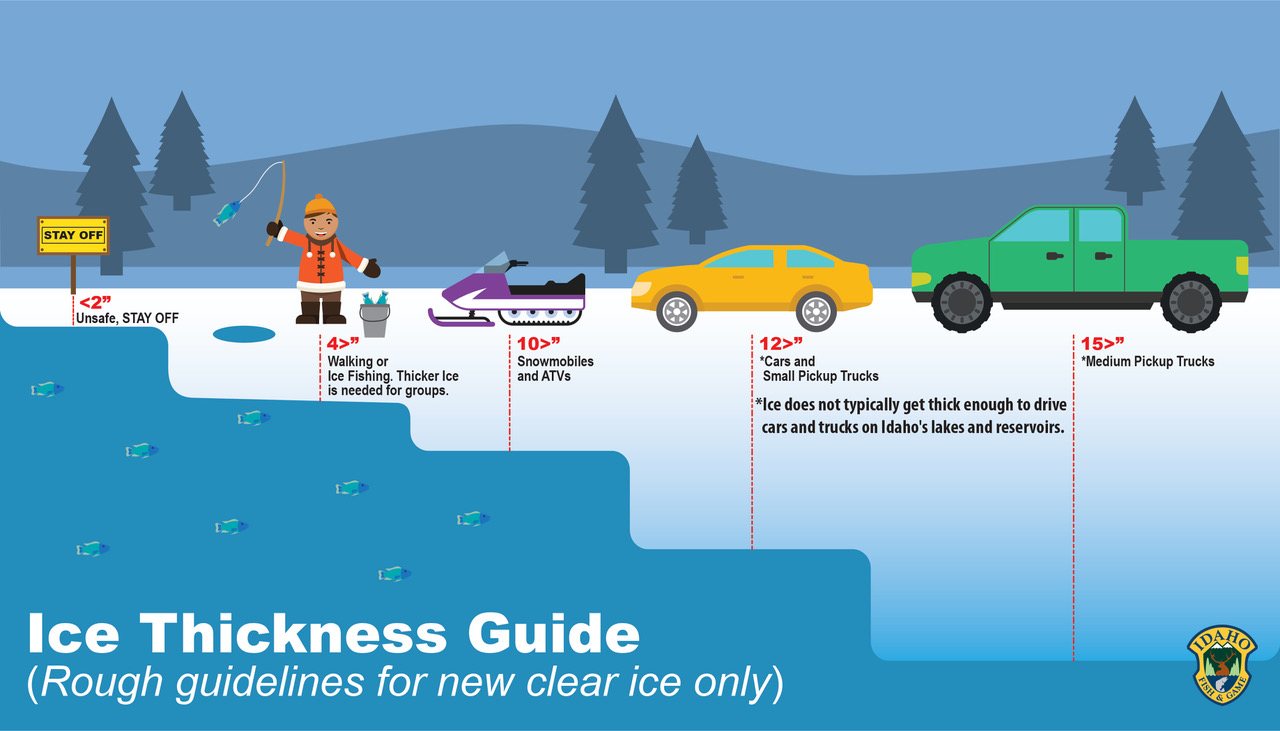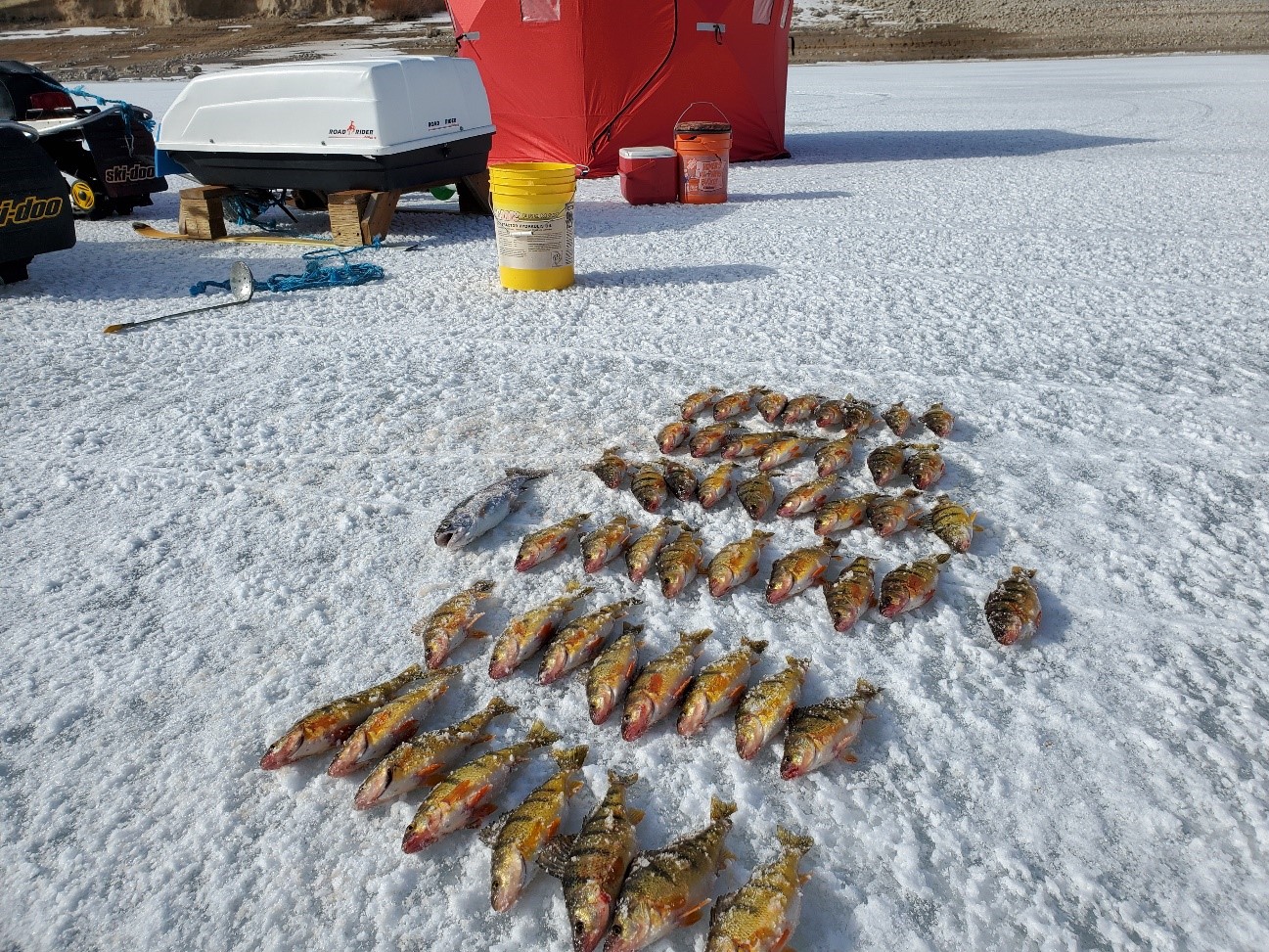Ice fishing on Ririe Reservoir has been productive this winter for anglers seeking kokanee and yellow perch, with some anglers catching both species in the same hole!

During the first half of February ice thickness ranged from 9.5 to 11.5 inches depending on where you were fishing.

Kokanee are a pelagic, schooling fish, which means they travel throughout the reservoir at suspended depths in small and large schools, therefore using a sonar system helps anglers find the right depth when schools approach their fishing holes. The challenge is keeping a school under your holes to improve catch rates.
Anglers on Ririe have reported catching their kokanee limit in a few hours when the schools are staying put or when they are frequently passing through. Anglers have also reported catching yellow perch near the bottom in water 30-50 feet deep near Juniper and in water less than 30 feet deep near Blacktail.
A variety of patterns and baits have been working. For kokanee, pink soft plastics, eggs, and silver spoons have been proving successful baited with meal worms and artificial eggs. For yellow perch, folks have been successful with jigs that sink fast and tipped with meal worms or night crawlers. Kokanee often bite softly, so a smaller hook and a sensitive rod can improve catch rates. As always, be safe on the ice and drill a test hole if you are uncertain about ice thickness.

The kokanee population in Ririe is essentially hatchery-supported with little-to-no wild reproduction occurring. As such, biologists can forecast what anglers can expect to catch during the winter and summer fishing seasons.
Kokanee are stocked in early summer as fingerlings that range in size from 3-4 inches and begin to grow rapidly by doubling or tripling in size by the fall and wintertime. We call these fingerlings age-0 kokanee and they turn 1 year old on Jan. 1 of the next year, and age 2 the following Jan. 1, and so on.
Kokanee in Ririe usually make it to age 2 and 3 before trying to spawn and subsequently die. This past year we sampled kokanee that were age 3 and they averaged about 14 inches, but some age-3 kokanee in Ririe can reach up to 17 inches!

Biologists were fortunate to sample Ririe Reservoir twice this past year and they can notice how the size structure shifts due to growth from early June to late October in the figure above. Fingerlings stocked in the summer range in length from 3-4 inches and by late October they are ranging about 6-7 inches. There's a shift in size from about 8-9 inches, which are age-1 kokanee, to 10-11 inches.
Biologists do see some overlap in lengths at two different ages, but the peaks are what are used to guide predictions in size at different seasons. Therefore, the fish that anglers are catching through the ice right now are about 10-12 inches, and these are age-2 kokanee since we are passed the January 1 mark. They predict the size structure of kokanee for the upcoming summer to be well into the 13 inch range and larger, which could provide good open-water fishing.

